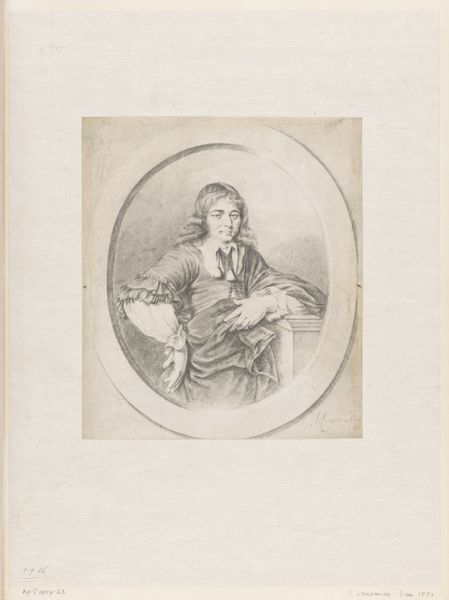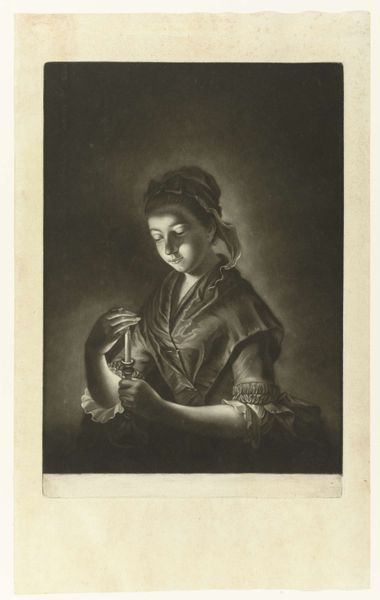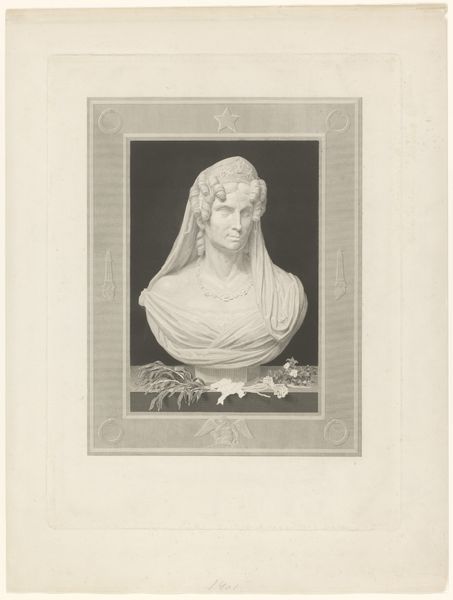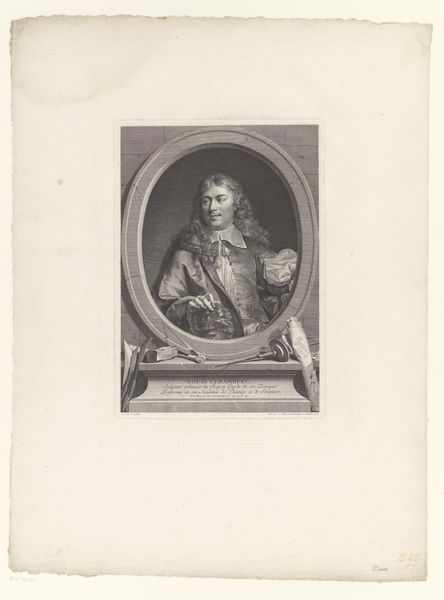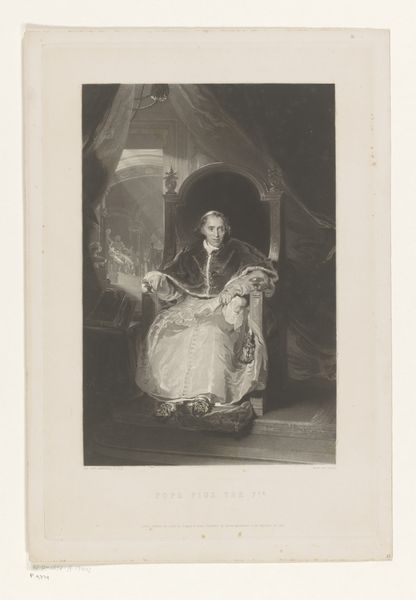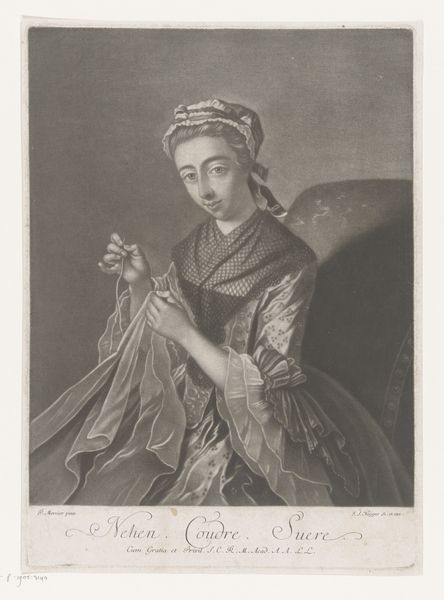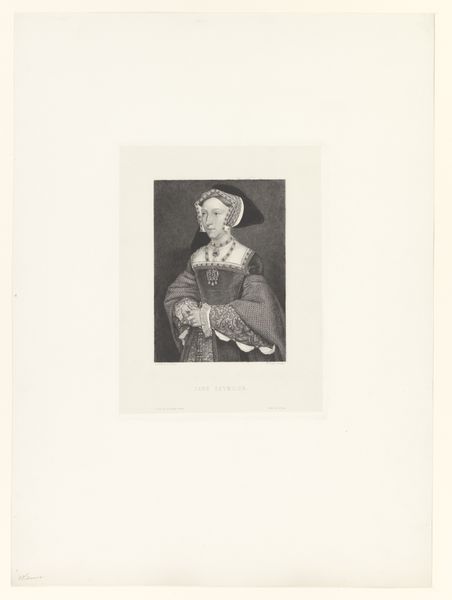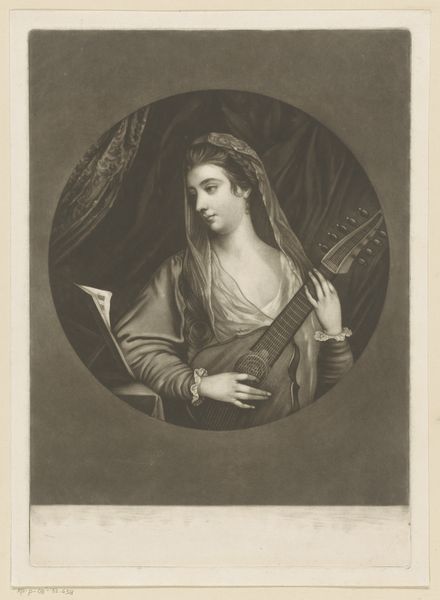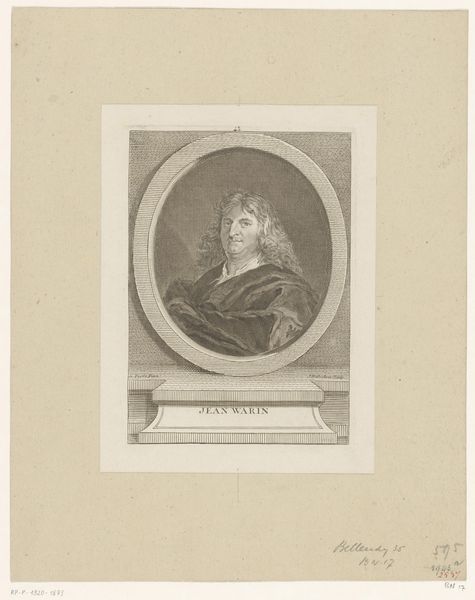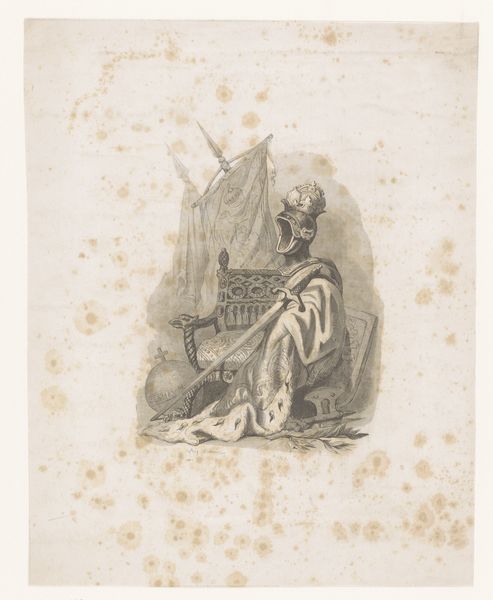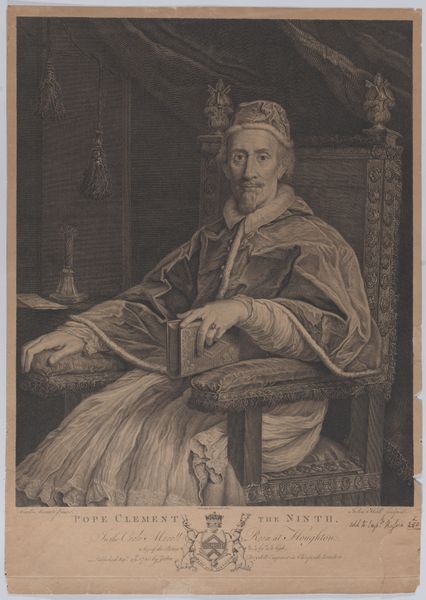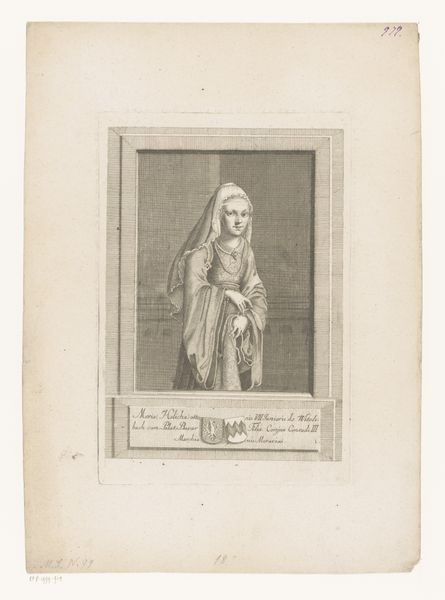
Dimensions: height 376 mm, width 278 mm
Copyright: Rijks Museum: Open Domain
Editor: This is "Portret van Georgiana Spencer," an engraving from 1772 currently at the Rijksmuseum. The grayscale palette and her contemplative pose create a somewhat somber, yet elegant atmosphere. How do you interpret this work based on its formal elements? Curator: Immediately striking is the use of light and shadow to define the subject. Notice how the artist employs chiaroscuro, the dramatic contrast between light and dark, not just to model her features but also to create a sense of depth and texture. The flowing lines of her dress, juxtaposed with the sharp angles of her gaze and hand gesture, establish a dynamic tension. Editor: I see that, particularly the contrast between the softer fabric and her focused expression. What’s the effect of limiting the tonal range? Curator: The restriction to grayscale, while perhaps dictated by the engraving process, forces us to focus on form and composition. The varying densities of lines and shading build up the forms in a structural manner. It moves beyond pure mimesis and explores how representation can be achieved through carefully modulated patterns and visual weights. Editor: So, you’re saying the process informs how we perceive the subject, moving us away from the sitter’s identity to focus on the art itself? Curator: Precisely. Consider, for instance, the background. Rather than providing a specific context, the nebulous forms suggest a field of potential, perhaps even mirroring the subject's internal state. This lends the composition a kind of abstract quality that resonates with romanticism. Editor: I see your point. It’s not just a depiction of a person; it's a carefully constructed arrangement of shapes and tones that invites contemplation of its internal mechanics and the artist’s technique. Curator: Precisely. It exemplifies how artistic choices, informed by medium and style, guide our interaction with an image. We should all look more closely at lines.
Comments
No comments
Be the first to comment and join the conversation on the ultimate creative platform.
